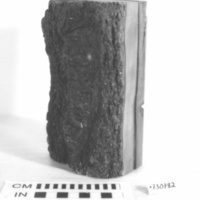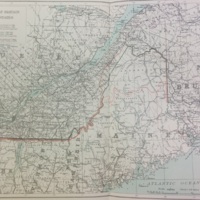Browse Exhibits (3 total)
Golden Boundaries: Klondike Townsite

One of the greatest developments in banking took place during the early 19th century when the Bank of England decided to "set up an international gold standard to bring order and stability to the international economy." Soon, countries that adhered to this new banking system began to feel the restraints of limited capital (Chilkoot Trail, 50). The 1880s and 1890s brought about series of "bank failures, a depression and currency devaluations." Gold became even more important and its discovery in the Northern part of Canada soon placed the Klondike on the World map.
Before the discovery of gold in the Klondike Region, the Yukon was a district within the Northwest Territories with Regina as its capital and "its boundaries the source of an ongoing dispute with the United States."
With the discovery of gold in 1896, a rapid advance in the development of the Yukon soon took place, leading to the establishment of the Dawson and Klondike Townsites. The surveying of the Klondike Townsite will not be conducted until 1901, a few years after the rush had completely subsided.
Sources: Klondike Gold Rush, The Klondike Gold Rush, Chilkoot Trail: Heritage Route to the Klondike.
Lines of Power: Cowichan Valley

The Cowichan Valley survey marker remains a crucial object for Canadian history. Its division of the Cowichan Indian Reserve and Cowichan Valley, modern day Duncan BC, represents a larger cultural phenomenon in a uniquely Canadian context; the dichotomy of settler and First Nations communities and their relationship to land. In short, the act of surveying lands demonstrates the importance of boundaries and ownership to Canadians, and the Cowichan Valley survey marker is a representation of the cultural, legal, and physical boundary between these two autonomous nations within Canada.
What is a boundary?
A boundary is a physical or aritificial line that indicates the extent of owned land parcels. Parcels are areas of land that can include waterways, buildings, natural resources, or airways and are legally owned. A boundary divides parcels and is defined by the parties who have interest in that land. (NRCAN "Surveys, Parcels and Tenure, 2010)
Of Monuments and Men

A tall, black monument once marked the border between Canada and the United States. Now part of the Canada Science and Technology Museum collection, the monument tells the tale of two titans - Great Britain and America - asserting their sovereignty. But a closer reading shows it also holds the story of one man...
Provenance research not only reveals new information about this iron post, but also introduces the human story behind the cold, hard (arti)facts.